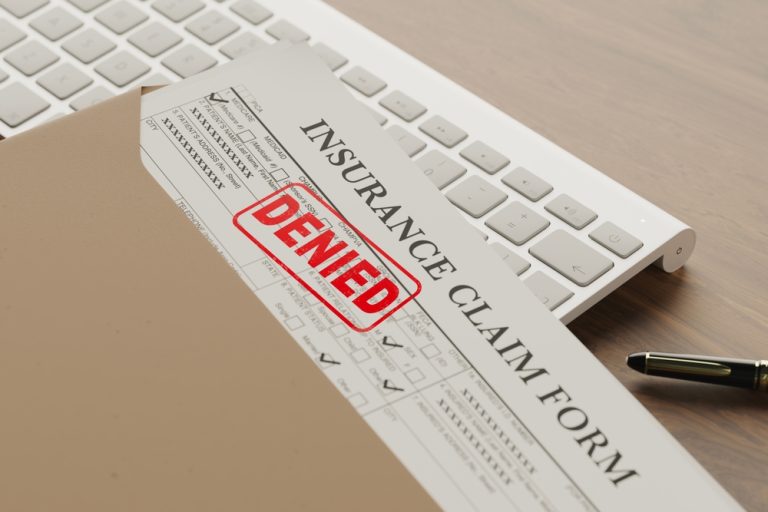How Businesses Can Defeat Website Accessibility Lawsuits
How Businesses Can Defeat Website Accessibility Lawsuits
Most large and midsize companies have faced a new reality in recent years—make their websites accessible to people with disabilities, or face exposure to lawsuits claiming that the sites violate the Americans with Disabilities Act or one of the many state laws prohibiting disability discrimination.
Despite spending millions of dollars to make their websites accessible, some businesses still encounter a steady stream of these ADA claims. So, when can a business feel confident it has done enough to defend against an ADA website accessibility lawsuit?

Heavily litigated issues such as this usually produce judicial guidance that businesses can follow. This however has not been the case with ADA website litigation. The U.S. Chamber of Commerce, among other pro-business groups, offered two cogent theories in their Amicus Brief to the Supreme Court in Domino’s Pizza LLC v. Robles as to why the spike in litigation has not resulted in clear judicial guidance. The first is that plaintiffs’ firms “have employed an aggressive sue-and-settle strategy, using the threat of fee-shifting under the ADA to force companies to forego fact-heavy, protracted and expensive trials in favor of fast monetary payouts.”
More than 93% of website accessibility cases filed in 2018 settled, and of the cases filed in 2019, 55% settled within 60 days, according to Usablenet’s Midyear ADA Web & App Accessibility Lawsuit Report. The Chamber notes that the lack of judicial decisions doesn’t allow for the measurement of ongoing compliance leading to a “rinse and repeat” pattern of settling these types of cases.
The second factor may be that a small number of plaintiff’s firms are responsible for the surge in ADA website accessibility cases. According to the report, just 10 firms are responsible for more than 82% of suits filed in federal court in 2018. Because websites and judicial districts do not share the same geographical boundaries, plaintiff’s firms can focus their fire on a few plaintiff-friendly jurisdictions, settle the cases quickly, and prevent courts from developing a clear body of case law regarding compliance.
Notwithstanding this challenging state of affairs, for now, the Supreme Court has rejected the invitation to take up the ADA website issue. Without action from Congress or the Department of Justice, more piecemeal litigation is expected. And with no federal standard for website accessibility in place for businesses to follow and conflicting judicial opinions being handed down throughout the country, the frustrating reality is that the measure of a business’s ADA website compliance varies to a large degree on the venue, the judge, and even the plaintiff’s attorney who files the claim.
In the interim, one obvious path to successfully defend these claims is to remediate the website to conform to the Web Content Accessibility Guidelines 2.0 Level AA. Companies that are defendants in this type of litigation can find some direction from past rulings on the ability to “moot” a case in the early stages by making changes to the website that make it accessible. A case is moot when it no longer presents a live controversy with respect to which the court can give meaningful relief.
Remediation is not an easy or guaranteed route to a quick victory. A few courts have been hesitant to dismiss cases based on mootness in the early stages of the litigation because they view whether a business has complied with WCAG as a question of remedy, not liability. Nevertheless, defendants should continue to set forth the mootness arguments.
For courts that are amenable to hearing mootness arguments at the outset of the litigation, generally the three factors the court will consider where a private defendant has voluntarily ceased the conduct at issue are: whether the challenged conduct was isolated or unintentional, as opposed to a continuing and deliberate practice; whether the defendant’s cessation of the offending conduct was motivated by a genuine change of heart or timed to anticipate suit; and whether, in ceasing the conduct, the defendant has acknowledged liability. In Friends of the Earth, Inc. v. Laidlaw Environmental Services, Inc., the Supreme Court stated that a request for injunctive relief will only be considered moot by a defendant’s voluntary compliance with the law if the defendant meets the “formidable burden” of demonstrating that it is “absolutely clear the alleged wrongful behavior could not reasonably be expected to recur.”
The formidable nature of that burden was on display in a 2018 ADA website case, Haynes v. Hooters of America, in which the U.S. Court of Appeals for the Eleventh Circuit rejected the mootness argument based on a website remediation plan entered into in prior unrelated litigation. The appeals court gave three reasons for finding that the mootness standard was not met. First, the record did not indicate that the plan had been fully implemented. Second, the plaintiff was entitled to injunctive relief to compel the defendant to continue to update and maintain its website to guarantee ongoing compliance, and finally, the plaintiff had no ability to enforce compliance with the prior remediation plan.
Consequently, Haynes v. Hooters begs the question of what is enough remediation to make the mootness argument successful. Companies can find some guidance in an opinion by the U.S. District Court for the Southern District of New York that distinguished the Haynes decision. In Diaz v. The Kroger Co., a legally blind plaintiff who uses screen-reading software to convert online content to audio alleged that the Kroger Company supermarket chain’s website violated the ADA. The plaintiff relied on the Hooters case to argue that fixing the accessibility violations did not moot the lawsuit. But, the court in Diaz noted that the defendant company stated in an affidavit that it had remedied all of the alleged ADA violations, ensured that no additional barriers to accessing the website existed, and that it was committed to guaranteeing access going forward.
Although the court in Diaz agreed with plaintiff that, because websites are always evolving, violations are more likely to reoccur than in the case of brick and mortar modifications, which are more permanent, the court disagreed that a website case can never be mooted. The court stated, “ADA cases involving websites are subject to the same mootness standard as their ‘structural’ counterparts … it cannot be said that an ADA claim involving a website can never be mooted, solely because of the technological characteristics of websites. Such limit is both unnecessary and would insert a brittle, technology-specific exception into the mootness doctrine that would itself become obsolete in an era of rapidly-changing technology.” As such, the court dismissed the case for lack of subject matter jurisdiction.
The case also recognizes that several other courts in the Southern District of New York have denied motions to dismiss website accessibility lawsuits based on mootness. Those cases offer a partial roadmap on what pitfalls companies should avoid if they want to use this defense effectively. For instance, in the 2019 decision Sullivan Jr. v. Study.com, the legally deaf plaintiff alleged that Study.com’s online video courses and educational programs denied equal access to deaf customers. Study.com argued that its recent remedial efforts in captioning all of its videos mooted Sullivan’s ADA claim. But, the plaintiff showed that there were continued barriers to accessing certain videos on the defendant’s website and thus, recurring violations. As a result, the mootness defense failed.
In the 2018 case Wu v. Jensen-Lewis Co., a legally blind plaintiff claimed the website of the defendant furniture company was not compliant with the ADA because it is not fully and equally accessible to her and other blind or visually impaired people. The company’s mootness argument did not prevail because it did “not provide any affirmative showing that its current website is ADA-compliant, and will remain that way, beyond asserting so and citing to the website itself,” the court in that case noted. Similarly, the judge in Del-Orden v. Bonobos, Inc., a 2017 case in the same district, found that the mootness defense failed because the court’s review of the clothing company’s website confirmed that there was at least one continued barrier to access for a blind plaintiff.
Ultimately, the most difficult challenge businesses face in these cases is to disavow the court of the notion that a rigid standard of zero violations is appropriate. Indeed, most in the industry agree that full compliance with all WCAG success criteria on the entire site at all times is not realistic. For example, it is not possible to satisfy all Level AAA success criteria for some content. Also, some parts of a website, such as an article that allows users to add comments or applications supporting user-contributed content, may not be under the author’s control.
Defendants therefore will need to show that, even if a technical violation exists, such a violation is not an actual barrier to access or does not impact the overall usability of the website. Alternatively, companies will need to rely on experts to persuade courts that substantial compliance with WCAG is sufficient to moot a case. For example, an expert should be able to testify that a certain percentage of compliance is reasonably and commercially attainable for the particular site.
In addition, businesses should establish a track record for their compliance programs, including designating personnel to ADA compliance and conducting regular internal and third-party audits, which will lend support to the company’s contention that it intends to maintain compliance in the future.
Defendants also must demonstrate that, even if they adopted such compliance program to avoid liability, this fact should not serve as a basis for the court to find that the case is not moot. The reality is most businesses’ first notice of the potential applicability of disability laws to websites and other electronic information technology was through a lawsuit.
Finally, in the event the court does not accept the company’s affidavit in support of dismissal as easily as the court did in Diaz, defendants can request that the court limit discovery to jurisdictional issues. This will allow plaintiff the opportunity to test defendant’s claim and may still allow defendant to satisfy the elements for mootness while reducing the overall cost of the litigation.
These cases provide a glimpse into the future of the next issues that will be litigated as businesses seek to successfully defend against the ongoing trend of lawsuits claiming website accessibility violations. While the technology behind websites continues to evolve, the current answer to mooting these lawsuits involves not only making sure websites meet the WCAG 2.0 standard but also taking swift, definitive action to guarantee accessibility and taking the initiative to ensure ongoing compliance with the help of experienced counsel and experts in the field of digital accessibility.
This article was published by Bloomberg Law on December 13, 2019. Reproduced with permission. Bloomberg Law, Copyright 2019 by The Bureau of National Affairs, Inc. 800.372.1033.






